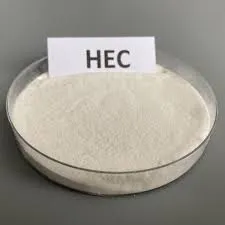
Okt . 31, 2024 01:39 Back to list
hpmc hydroxypropyl methylcellulose
Hydroxypropyl Methylcellulose (HPMC) A Versatile Polymer in Modern Applications
Hydroxypropyl methylcellulose (HPMC) is a semi-synthetic polymer derived from cellulose, and it has gained remarkable attention across various industries due to its unique properties and versatility. This non-ionic cellulose ether has a wide range of applications, while its safety profile and compatibility with other substances make it a popular choice among formulators and manufacturers.
Hydroxypropyl Methylcellulose (HPMC) A Versatile Polymer in Modern Applications
One of the most significant applications of HPMC is in the pharmaceutical industry. It serves as a reliable excipient in drug formulation, particularly in oral dosage forms such as tablets and capsules. Its thickening and binding properties ensure that active pharmaceutical ingredients are effectively delivered and maintain stability throughout their shelf life. Furthermore, HPMC is used in controlled-release formulations, where it regulates the release of the drug over an extended period, enhancing therapeutic efficacy.
hpmc hydroxypropyl methylcellulose

In the food industry, HPMC is widely utilized as a food additive. It acts as a thickener, emulsifier, and stabilizer, providing improved texture and mouthfeel in various food products. Additionally, its ability to retain moisture makes it beneficial in baked goods, where it can prolong freshness and shelf life. HPMC is also considered a vegetarian alternative to gelatin, which appeals to consumers seeking plant-based options.
HPMC’s application extends beyond pharmaceuticals and food; it is also used in construction materials. In the field of building and construction, HPMC functions as a water-retaining agent in mortar and plaster. It improves workability, facilitates the adhesion of materials, and prevents cracking by reducing water loss during the curing process. These properties have made it an essential component in the production of high-quality construction materials.
Another notable use of HPMC is in the cosmetics and personal care industry. Its thickening and stabilizing properties are invaluable in formulations such as creams, lotions, and gels. HPMC enhances the texture and consistency of cosmetic products, ensuring a smooth application. Additionally, its ability to form a film on the skin can contribute to moisturizing effects and improved product performance.
In summary, hydroxypropyl methylcellulose is a multifunctional polymer with a broad spectrum of applications across various industries. Its versatility in pharmaceutical formulations, food products, building materials, and cosmetic formulations underscores its importance in modern manufacturing processes. As research and development continue to advance, the potential applications of HPMC are likely to expand even further, reinforcing its position as a crucial ingredient in numerous consumer products.
-
tile-bonding-additives-for-stronger-bonds
NewsAug.22,2025
-
construction-grade-rdp-for-wholesale-needs
NewsAug.22,2025
-
trusted-wholesale-hec-partners
NewsAug.22,2025
-
hec-solutions-for-industrial-excellence
NewsAug.22,2025
-
construction-additives-need-hpmc-essentials
NewsAug.22,2025
-
hpmc-versatile-cellulose-ether-for-industries
NewsAug.22,2025







